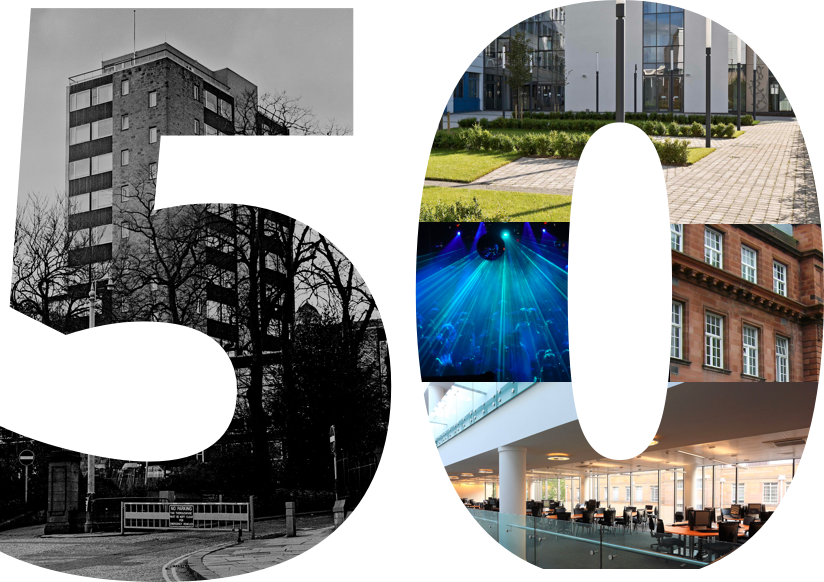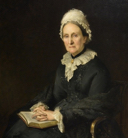
-
Celebrations begin to commemorate 50 years of the University of Dundee
2017 -
The University of Dundee becomes a fully independent institution under the terms of the Royal Charter.
1967 -
Ordinances issued in 1897 made University College form part of St Andrews. and establish a Faculty of Medicine.
1897 -
The Deed formally creating University College Dundee was signed by founders Miss Mary Ann Baxter and her cousin Dr John Boyd Baxter.
1881
The Creation of the University of Dundee
-
date
Thu, 12 Jan 2017
-
Running Time
00:06:26
Professor Sir Pete Downes examines key moments in our history and some of the people, discoveries and decisions that shaped the university we know today.
Episode Transcript
It’s August, 1967. A strange sight awaits the people of Dundee as hundreds of students file up the Law, dressed in red academic gowns. At the top they look around, an arresting vision in crimson, before heading back down to the newly designated University of Dundee. The red gowns were a tie from the 70-year-history with the University of St Andrews, which was now severed, leaving the University of Dundee students free to enjoy their own institution.
The path to this new chapter in our history was a long one. In 1881, University College, Dundee, was founded with donations from the Baxter family, as an independent academic institution. It promoted the education of persons of both sexes and the study of Science, Literature and the Fine Arts'.
Amongst the earlier teachers were people of great eminence including D'Arcy Thompson, the biologist who invented mathematical biology and Sir Patrick Geddes, the botanist and town planner. They began a great tradition in Dundee of tacking problems by drawing on knowledge from different disciplines.
In 1897 University College became part of the University of St Andrews. This union served to give expression to local feeling that there should be a vital connection between the old and the new in academic affairs.
In 1963, the Committee on Higher Education under the chairmanship of Lord Robbins recommended in its report to Parliament that 'at least one, and perhaps two, of its proposed new university foundations should be in Scotland'.
The Government approved the creation of a university in Dundee, and in 1966, the University Court and the Council of Queen's College submitted a joint petition to the Privy Council seeking the grant of a Royal Charter to establish the University of Dundee. This petition was approved and, in terms of the Charter, Queen's College became the University of Dundee on the first of August 1967.
Our story doesn’t stop there, however, as the University has continued to grow and develop over the last fifty years, including creating a faculty of Environmental studies in 1974 which validated degrees of the Schools of Architecture and Town and Regional Planning of Duncan of Jordanstone College of Art. By 1988 all degree courses offered at the College were validated by the University. This collaboration between the two institutions led to a formal merger of the College and the University with effect from 1st of August 1994.
In 1995 the University was successful in securing the contract from the Scottish Office Health Department for pre-registration nursing and midwifery education in Fife and Tayside. This led to Tayside College of Nursing and Fife College of Health Studies becoming part of the University from 1 September 1996 as a single School of Nursing and Midwifery within the Faculty of Medicine and Dentistry which was subsequently renamed, the Faculty of Medicine, Dentistry and Nursing.
In December 2001 the University merged with the Dundee campus of Northern College to create the Faculty of Education and Social Work.
Those connections between the old and the new, between the traditional and the modern and between the work of the University and its impact on the world have shaped our thinking for the past 50 years and will define our future. They have served us well.
Students, staff and visitors come and go, each leaving a mark on the institution, growing it to the University it is today. We've been named Scottish University of the Year in The Times & Sunday Times Good University Guide for two consecutive years and are one of the world’s Top 200 universities, as ranked by Times Higher Education.
Both Times Higher Education and QS World University Rankings have ranked Dundee best in the UK and one of the top 20 worldwide among universities under 50 years old and we are rated as one of Europe’s most innovative universities.
Our students also rate us very highly on student satisfaction – we are one of the UK’s top ten in the National Student Survey 2016, and first for personal development of students.
Fifty years ago, it was a very different institution. Legend has it that the students who walked to the top of the Law that day in 1967 took binoculars with them, so they could see their old classmates across the water in St Andrews and wave. It doesn’t seem likely, but there were sowed the seeds of a reputation that the University of Dundee has followed in the last fifty years and will continue to push in the next fifty – looking ahead and reaching for the sky.
Professor Sir Pete Downes

Professor Sir Pete Downes has been Principal and Vice-Chancellor of the University of Dundee since 2009. Under his leadership the University has consistently been rated best in Scotland for student experience by Times Higher Education and has achieved record levels of research funding. He has led the development of the University’s Transformation agenda, with the goal of becoming Scotland’s leading University, helping transform lives locally, nationally and globally and delivering economic, social and cultural impact.
He was Convener of Universities Scotland from August 2012 to July 2016, having previously served as Convener of its Research and Knowledge Exchange Committee. He has been a leading voice in championing the strengths an autonomous and diverse university sector can offer Scotland, and particularly the role universities can play in driving innovation and economic growth.
Sir Pete is one of the UK’s leading biochemists. He spent eleven years in the pharmaceutical industry before joining the University in 1989. Before his appointment as Principal he served as Vice-Principal and Head of the College of Life Sciences. He has played a key role in establishing Dundee as a global leader in life sciences, making a significant impact on both the Scottish economy and our understanding and treatment of major diseases including diabetes and cancer.
He was a co-founder of the Division of Signal Transduction Therapy (DSTT) at Dundee, a partnership between the University and several of the world’s largest pharmaceutical companies. The DSTT was founded in 1998 and has attracted over £50 million of inward investment to the city. It is widely regarded as a model for how academia and industry can interact productively and was awarded a Queen’s Anniversary Prize for Higher Education in 2006.
Sir Pete was awarded the Colworth Medal of the British Biochemical Society in 1987 and was elected a Fellow of the Royal Society of Edinburgh in 1991 and a Fellow of the Academy of Medical Sciences in 2009. He was honoured by the Queen with an OBE in 2004 and a Knighthood in 2015.
He is a member of the Council of the Society of Biology, the National Centre for Universities and Business, the Scottish Council for Development and Industry, Chairman of the Advisory Board of Interface, a Trustee of the Saltire Foundation, and a board member of Design Dundee Ltd, which is delivering the V&A Museum of Design to Dundee.
-
Celebrations begin to commemorate 50 years of the University of Dundee
2017 -
The University of Dundee becomes a fully independent institution under the terms of the Royal Charter.
 1967
1967 -
Ordinances issued in 1897 made University College form part of St Andrews. and establish a Faculty of Medicine.
1897 -
The Deed formally creating University College Dundee was signed by founders Miss Mary Ann Baxter and her cousin Dr John Boyd Baxter.
 1881
1881